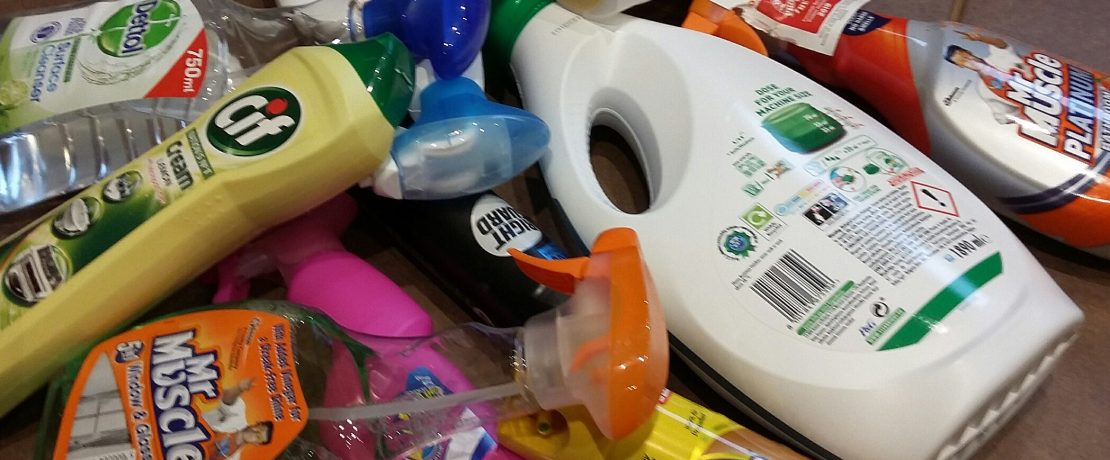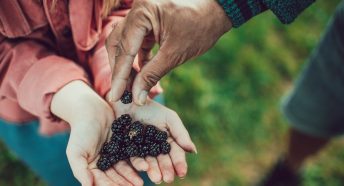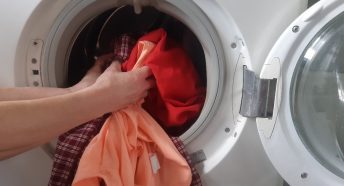Chemicals down the drain, a journey of discovery
CPRE Hertfordshire is concerned about pollution of our rivers and streams and damage to marine wildlife. Our Trustee Terry Over has been on a journey of discovery about the chemicals in the common household products his family has come to rely upon. His research into the damage these chemicals cause to our water resources and the marine ecosystem is eye-opening. In this article he documents what he’s learned, and how his family has found ways to adopt environmentally friendly substitutes for most of the products they use around their home.
Chemicals down the drain
I remember a light bulb moment a few years ago when my children were younger: “Keep out of reach of children” was the warning on the laundry detergent. So, if it is not great for our children why are we washing the clothes they are going to wear in it and then sending the rinsed water down the drain to the rivers and the sea?
I remembered being challenged by my ignorance; for decades we had simply washed our clothes without consciously thinking about the ethics of the process. I set aside an hour and internet searched. It was definitely time well spent, a revelation even, and set me off on a journey of completely changing our habits with regards to the use of all synthetic chemicals in our home.
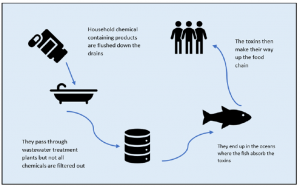
The more I researched the better I understood that:
- When we wash an unwanted substance down our drains it does not mean that it goes away, it just goes somewhere else.
- When chemicals are poured down the drain, they enter the waste water system, which usually filters into a local wastewater treatment plant. However, these chemicals persist through the water treatment process and end up discharged from the water treatment works back into rivers, seas and ground water.
- Whilst we may think these chemicals are diluted and spread throughout such a huge body of water it will not cause any harm, they will and have bioaccumulated over time as 7.7 billion people around the world pollute our watercourses every day.
- These chemicals, and the cocktail of mixed chemicals, can cause disruption to the endocrine systems in the biodiverse life in our waters including microbials and fish. This can lead to reproductive and behavioural disorders, a compromised immune system, neurological problems, and even cancer.
- As other animals consume water borne creatures that are poisoned with these chemicals, they bioaccumulate up the food chain and increase in toxicity. This can damage an entire ecosystem, and if humans eat these fish directly then there may be consequences for us as well.
I decided to check out all the ingredients written on the back of a Laundry Detergent bottle. How are they made? Where do they come from? What harm could they have on the environment? What harm can they have on me? Once again it was eye opening and I challenge you to do the same research on the ingredients of just one household cleaning product that you use. For example just internet search “What are the effects of sodium lauryl sulphate?” and cross check a few scientific and blog based websites to get a general understanding.
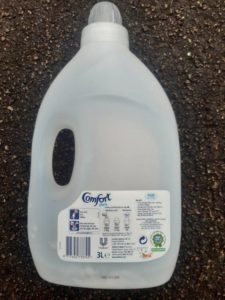
So, we decided to try and stop putting synthetic chemicals down the drain ever! One by one we ceased to use or replaced each product we used with a natural organic or more sustainable alternative. We understood we had been enslaved for years to the advertising, marketing and synthetic aromas of our favourite brands so there needed to be an acceptance of “different” in all replacements but we persevered and I am pleased to confess that all swaps have been successful swaps. This is what we did:
Laundry
We stopped using laundry powder, liquid or tablets. We stopped using fabric conditioner. We stopped using stain remover. We investigated using more eco-friendly liquids from SESI or Ecoleaf but in the end we started using Soapnuts. (Soapnuts or Soapberries are actually dried fruit shells which contain real natural soap called saponin, which is released when they come into contact with water). So the key is saponins.
But soapnuts have to be transported from India and our western desire could cause supply issues there, so now we use conkers (with a few drops of pure essential oils). Yes, the glossy brown seeds of the horse chestnut tree, collected in bulk in the autumn, dried for storage and re-hydrated for laundry liquid when we need some. [If you want to know more about the “alchemy” of using soapnuts or conkers I will be pleased to tell you all the mistakes and successes we made on our journey of discovery.
We exchanged shop bought stain remover with a range of ingredients that my grandma probably used.
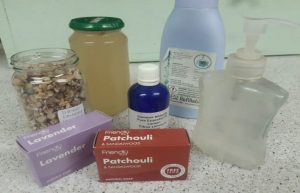
Kitchen
Washing up liquid – we replaced our supermarket brand with an eco-friendly version from SESI that we buy from The Refill Pantry – in our own containers – not perfect but getting closer.
Dishwasher tablets – we replaced with bicarbonate of soda plus a couple drops of washing up liquid.
Bathroom
Hand soap – We have replaced all liquid pump soap with an eco-friendly version from Eco Leaf. And all soap bars with bars from Friendly Soap. Check out their “Our Story” page.
Shampoo – A bit of a mix, for some in the household have replaced shampoo in a bottle with eco-friendly shampoo bars whilst others have opted for a liquid shampoo from Eco Leaf.
Hair conditioners – ditto shampoo above.
Body wash – ditto Hand soap above.
Shaving foam – replaced gel or spray foam with a shaving bar.
Bath soak – Baths are a rarity in our drive for water conservation but when we do indulge gone is the aromatic coloured stuff and instead good old Epsom Salts soothes the aches and pains.
Bubble bath – just gone.
Bleach and Toilet cleaner – this was the first to go. If you want to be put off completely then researching the ingredients of bleach is pretty depressing. We have replaced it with a blend of bicarbonate of soda and white vinegar.
Toothpaste – this is currently our stumbling block and we are yet to make the change so any advice would be appreciated.
It is great to think we are putting less harmful stuff down our drains and whilst we all have to decide our own views on what is and what is not acceptable to flush down our drains, I would encourage you to just try and replace or stop using at least one harmful product.
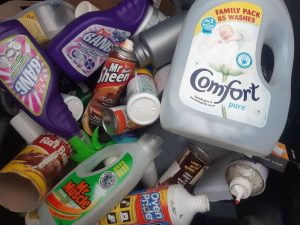
The unexpected added bonus which I really appreciate is that gone are the scents of ammonia and unhealthy synthetic chemicals – of which I had grown accustomed to and no longer noticed – that pervaded throughout the house; they have been replaced by neutral or natural aromas and the ambience seems healthier for it.
After we had challenged ourselves on what chemicals we put down the drain next it was time to tackle all those other synthetic chemicals we clean our surfaces, air and garden with, but that story is for another day.
